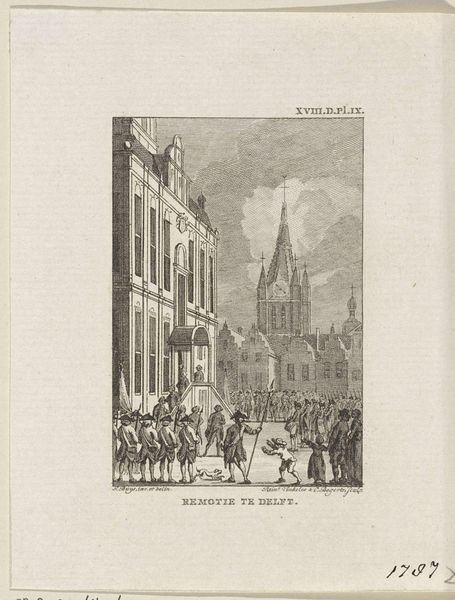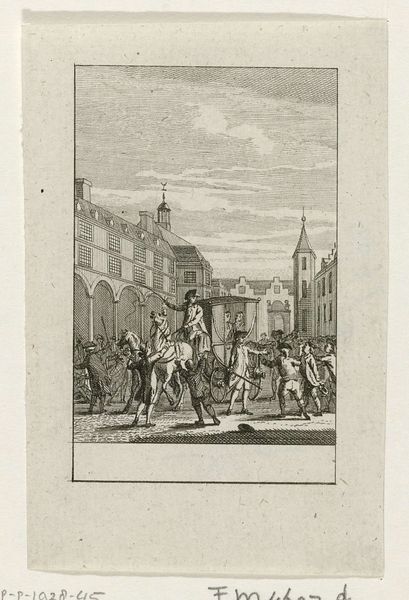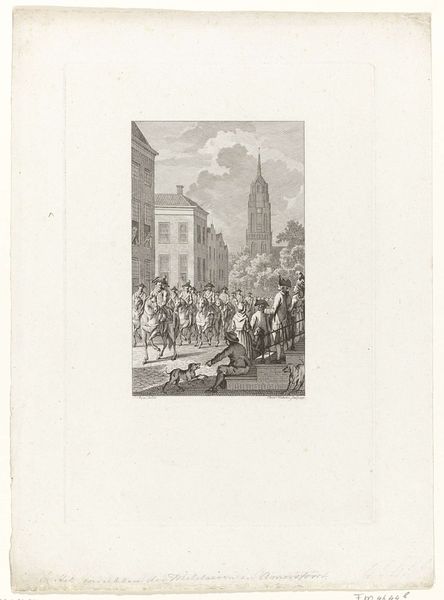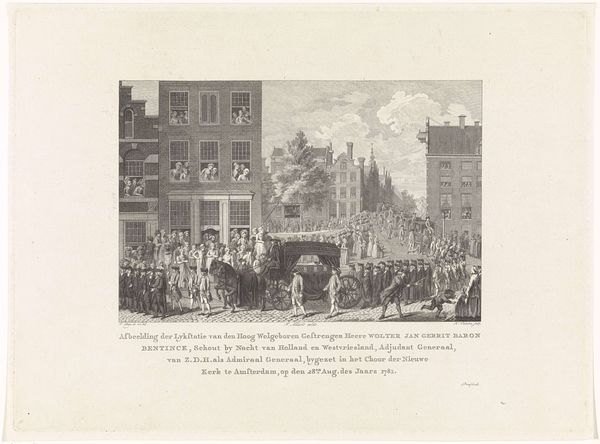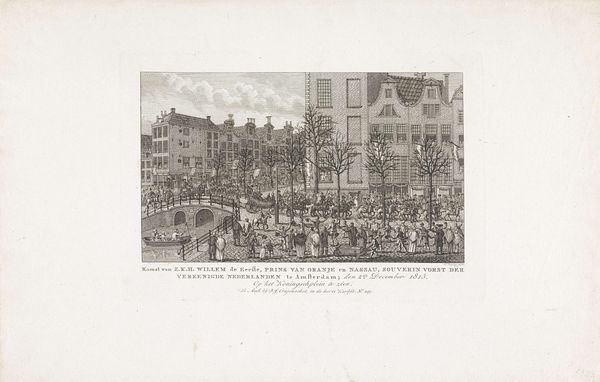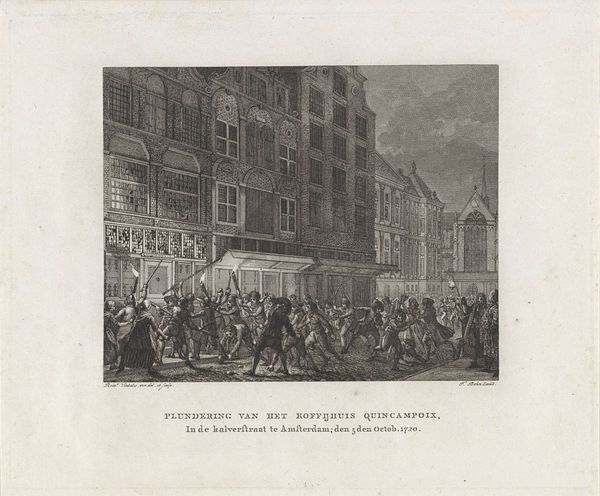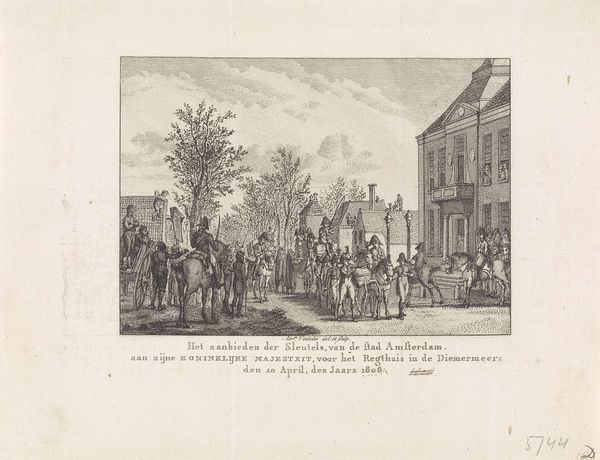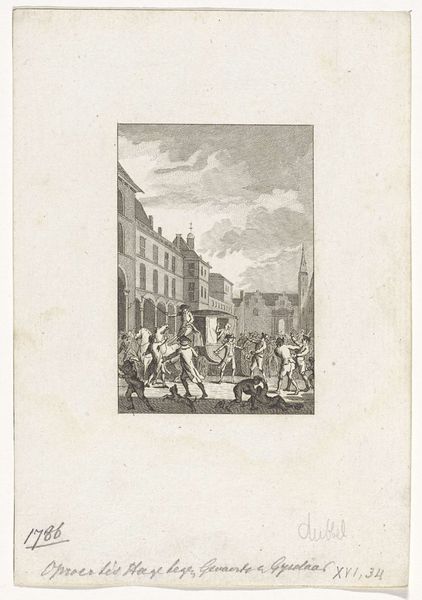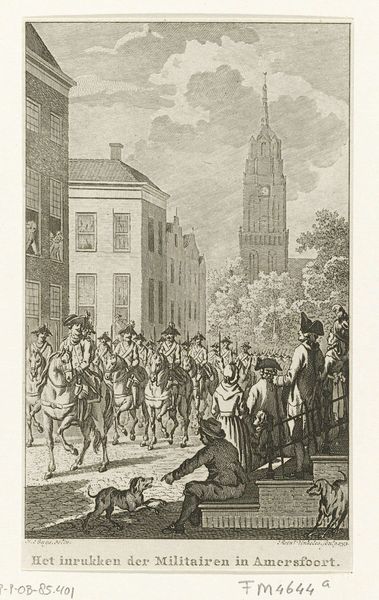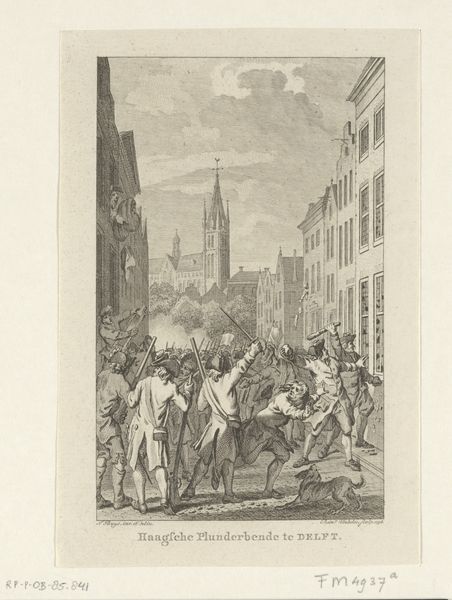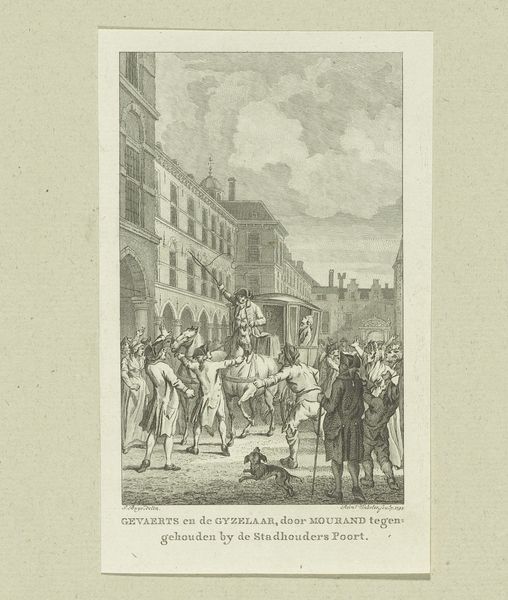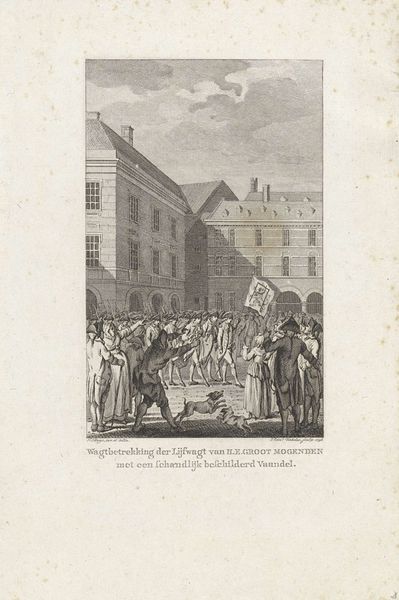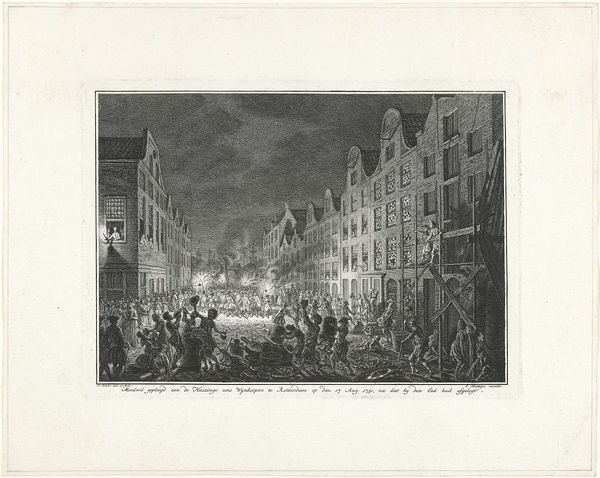
print, etching
#
dutch-golden-age
# print
#
etching
#
cityscape
#
genre-painting
#
history-painting
Dimensions: height 128 mm, width 100 mm
Copyright: Rijks Museum: Open Domain
Curator: Here we have "Plunderen van huizen van patriotten te Deventer, 1787," an etching printed sometime between 1787 and 1795. It’s currently held in the collection of the Rijksmuseum. Editor: My first impression? Chaos in monochrome. The frenetic energy practically leaps off the page. It feels like looking at a pivotal moment in history caught mid-maelstrom. Curator: It depicts exactly that—a historical snapshot of political turmoil in the Dutch Republic. The houses of Patriots, supporters of democratic reforms, were being targeted. The scene, illustrated by Reinier Vinkeles, highlights the vulnerability of political factions in times of upheaval. Editor: I see it now. There's a sense of urgency in the etched lines, the architectural precision contrasting the riotous figures below. It's like the city itself is a silent observer of its own destruction, no? The perspective feels tilted, unsettling. Curator: It's a loaded image. Vinkeles and his contemporaries employed such imagery to capture, but also shape, public perception. Prints like this were critical for disseminating political narratives. Editor: It feels incomplete. So much action and barely an emotion in sight! But that, I guess, is the intention. An impartial record. Did it stir emotions at all at the time of printing, or did it simply "lay out the facts" of that day? Curator: I'd argue the seeming emotional detachment only amplifies the message. The absence of overt emotion encourages viewers to fill the void, projecting their own fears or convictions onto the scene. By documenting such unrest, it both mirrored existing social tensions and played a role in amplifying those tensions in subsequent discourse. Editor: Hmm, that rings true. An echo chamber from the past, resonating with contemporary anxieties, huh? This old print shows, as artists, we might be able to present society with its mirror… It remains up to them to decide how to react to what stares back. Curator: A potent and enduring observation! It encapsulates the complex interplay between art, politics, and the ever-shifting sands of public sentiment. Editor: Nicely said. For me, it shows the potential in restraint… Even if those intentions were for purposes I find rather dubious in principle.
Comments
No comments
Be the first to comment and join the conversation on the ultimate creative platform.
